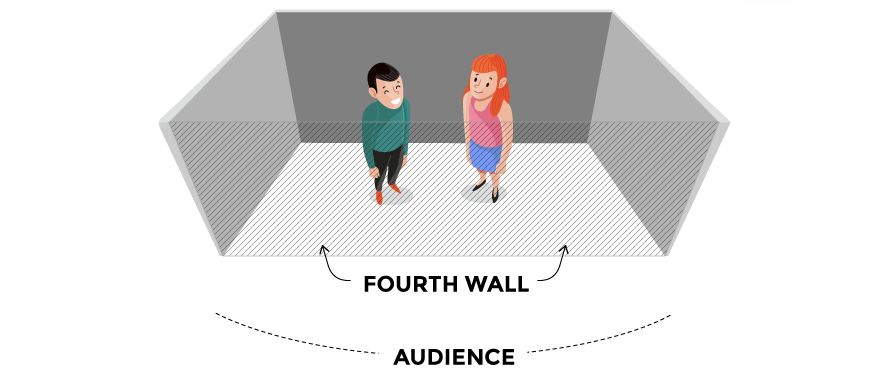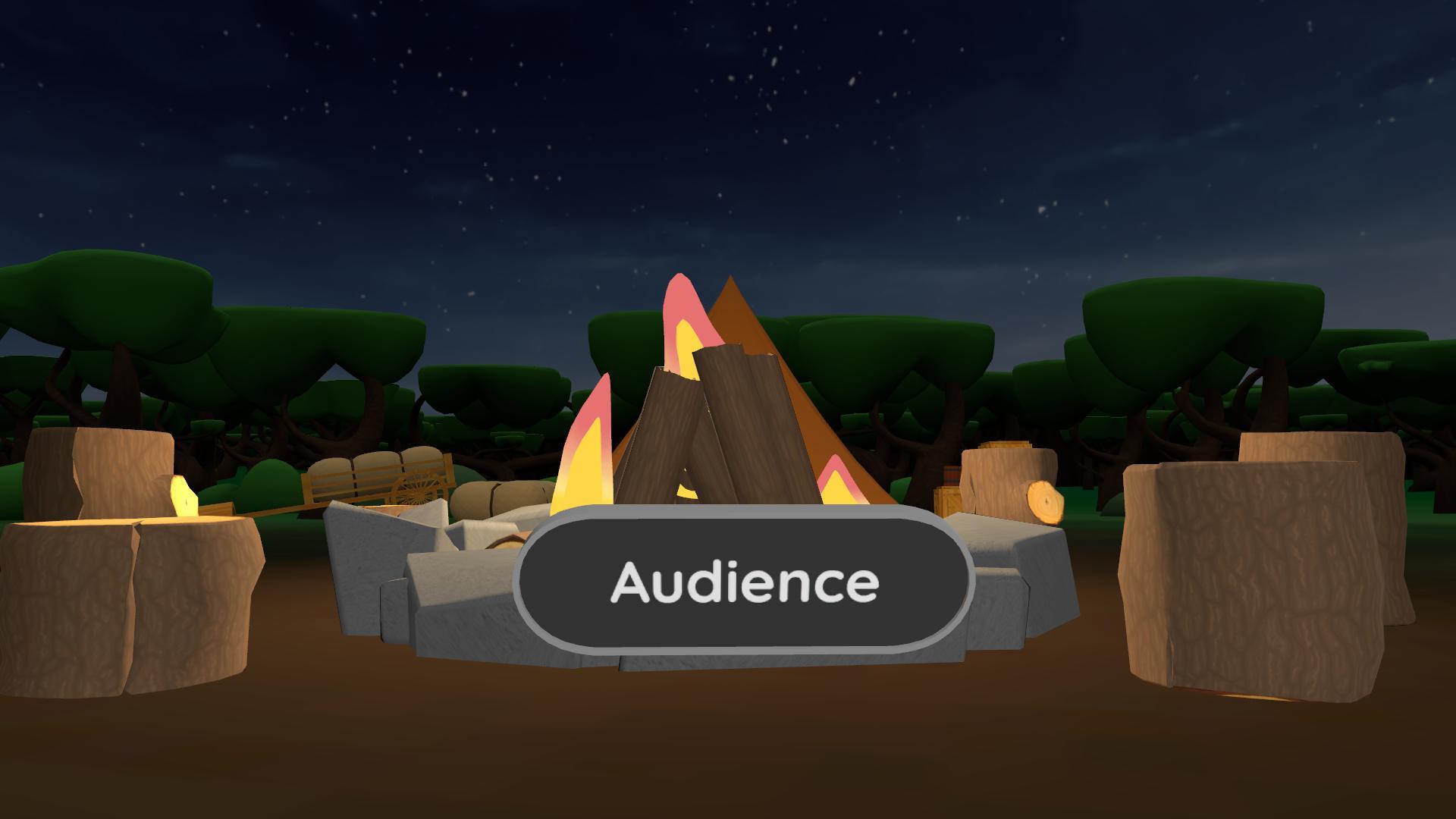- by Lux
By Lux (Flipside's CEO & Co-Founder)
The fourth wall is a concept in traditional film and theatre which is essentially the boundary between the performers and the audience.

While there are exceptions, like theatre in the round, in most styles of theatre the audience is looking at the performance from the front of the stage. This is also known as a proscenium, in theatre lingo. In film, this would be the camera itself.
 | Breaking the fourth wall happens when an actor deliberately addresses the audience, speaking directly to them, or speaking directly into the camera. This was popularized in television shows like BBC's The Office, where actors would turn and look at the camera as if conferring with the audience that something absurd just happened. This can be used as a way to increase engagement with the audience, add emotional impact, create a memorable moment in the experience, and even make the audience feel like part of the show. |
In immersive theatre, there's no obvious fourth wall, yet there's still an audience whose perspective needs to be managed throughout the performance.
Some virtual worlds have obvious fourth walls because they mimic real-world theatres or stages. Flipside has a number of these, from the black box theatre, comedy club, outdoor stages, or our newest Laughs N' Riffs stage. In these cases, it's obvious where the audience will be and that the actors should make sure to craft the experience for that perspective.

Others, like our kitchen, class room, or campfire sets have no obvious fourth wall, but one must still to be added to the environment so that performers will know where the audience is expected to be.
An added question to be asked in crafting an immersive experience is whether the audience is participating in the story or simply watching, and whether this can be used to increase the sense of immersion or potentially take away from it.
In immersive worlds, audience comfort is also a factor to consider. Some audience members may not be comfortable having to engage, just like they may not want to sit in the front row of a stand-up comedy show for fear of becoming part of the show.
All these considerations are important in deciding how you want to craft a piece of immersive entertainment.
In immersive entertainment, there are two ends to the spectrum of breaking the fourth wall:
Between these ends are other approaches such as giving a knowing nod to the audience but not engaging verbally, and many other ways we have yet to dream up. Immersive performance is a ripe ground for innovation.
There are also examples of breaking the fourth wall for specific purposes, such as:
We think a lot about the fourth wall in Flipside. Our team has many discussions and plans for evolving the audience's perspective and experience. We look forward to exploring this subject with Flipside's community of creators as Flipside continues to evolve.
Today, when you load a set to record a post, Flipside shows an "Audience" marker where the audience members will spawn when loading the post to watch. This is the first step to something more full-featured that we're working on fleshing out in a variety of ways, such as:

One key challenge to overcome with moving the audience between positions or giving them vehicular controls is simulator sickness. While we already have features like vignetting of the user's POV when walking around in Flipside or rotating the world while invisible, this needs to be considered in any implementation of audience movement as well. For example, preventing the rails experience from tilting the audience position while moving it between point A and point B, but only allowing the creator to adjust the yaw but not the roll or pitch.
There's also the challenge of watching content in mixed reality versus fully immersive virtual reality. The audience in this case may often be arranged more like the audience in theatre in the round except the content would likely need to be scaled to fit the room instead of being life sized, and the same piece of content in Flipside may end up being viewed in both of those contexts.
Another consideration for non-headset-wearing audiences and how we might enable audience members to become avatars within the content or whether we enable them to drop and control virtual cameras in the scene so they can feel like the director of the show.
Each of these is a powerful way to engage audiences and ultimately, our job is to empower creators to craft the experience for all audiences in such a way that makes for a great experience for each of them. It's a tall order, but we've got more than a few tricks up our sleeves that we'll be introducing over time.